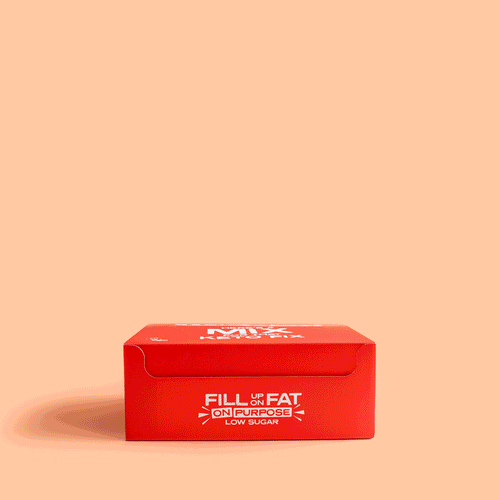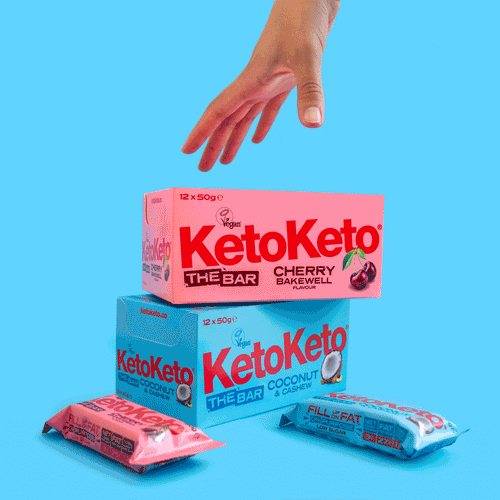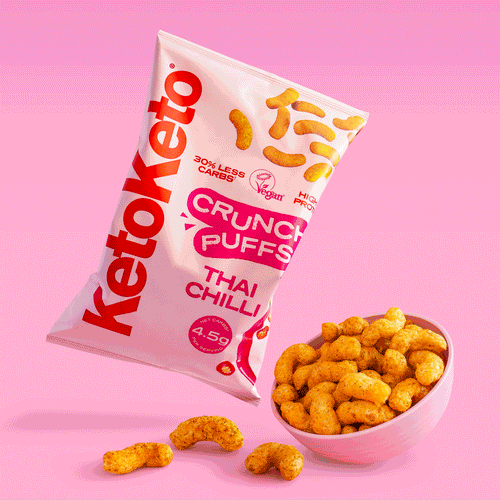When you first start learning about the Ketogenic diet, it can feel much like you’ve landed on a different planet where everyone is speaking an unusual language. ‘Ketones’, ‘Macros’, ‘MUFAs’ and ‘MCT’ are just a few of the commonly used terms by Keto ambassadors. But what do these Keto terms actually mean?
If you’re new to Keto and want to understand the Keto lingo a little better, we’ve got you covered. We’ll be laying out the most common Keto terms and letting you know exactly what they stand for, and importantly, how they relate to you.
No more bank stares or googling weird acronyms…here are 11 of the most common and quirky Keto terms to widen your knowledge and open you up to the world of Keto.
Keto
Short for Ketogenic, the full name given to the diet that encourages a low-to-no-carb way of eating. Keto advocates for a high-fat and moderate-protein eating plan. The name ‘Ketogenic’ derives from the change in your metabolic state once you begin to eliminate carbs, and instead fuel your body with mostly fats and protein. Your metabolism shifts into a state called Ketosis (more on that next), hence the name Ketogenic, or Keto for short.
Ketosis
The whole point of the Keto diet is to get your body into ketosis. That means it’s pretty important, so what does it mean exactly?
Ketosis is the name given to your body’s metabolic state when it no longer has carbohydrates for fuel. Typically, with a diet laden with carbohydrates your body uses carbs as the main source of energy - converted into glucose for fuel.
Without carbohydrates on a Keto diet? Your body will begin to burn fat instead, which produces Ketones as a by-product and a fuel source. Once this happens, your body is in a state of ketosis.
Ketones
Ketones, what are they and why do they matter? Ketones are the measure by which you know if you’ve been successful with your Ketogenic diet or not. In simple terms, Ketones are a type of chemical that your liver produces when it breaks down fats. Thus the presence of ketones in your body tells you that your body has now entered a state of Ketosis and is burning fat for fuel rather than carbs. Hurrah!
Ketones are a pretty big deal for Keto-enthusiasts. Most following the Keto diet will be measuring their ketone levels as they live the Keto lifestyle, to ensure they’re on target and staying on track. Learn more about ketones and how to measure them here.
Total Carbs
Keto-ers love talking about carbohydrates, they’ll specifically chat about total vs. net carbs. What do they mean? Well, total carbs refer to the total amount of carbohydrates a food source contains including fibre and sugar alcohols, even though your body cannot easily digest them.
Let’s take almonds as an example, per 100g of almonds you’ll get 22g of total carbohydrates. Sounds like a lot! But that includes 12g of dietary fibre and 3.9g of sugar alcohols. Some on the Keto diet prefer to use total carbs to ensure ketosis, while others encourage using net carbs instead.
Net Carbs
As already mentioned, net carbs are the number of carbohydrates in a food minus the fibre and sugar alcohols. Some say these components of the carb content do not count towards your carb allowance since your body cannot easily digest them. Using net carbs rather than total carbs gives you a little more leeway with your carb intake and may make your journey to the Keto diet a little easier.
Electrolytes
Our bars are made to help curb cravings and keep you fuller for longer. With only 3g of net carbs per bar, they’re the
perfect Keto snack for anytime during the day. Save more when you buy more, by taking advantage of our Box Combo deal. Pick your favourite flavours or try a new
flavour for a change.
The KetoKeto Box Combo
A word you may not have heard of before going Keto, if at all, is electrolytes. Yet you may quickly realise electrolytes can be crucial for your health and well-being. So what are they?
They’re essential minerals such as sodium, calcium and potassium that your body needs to function well. Without sufficient electrolytes, you can begin to suffer from headaches, fatigue, muscle cramps and nausea aka Keto Flu. Urgh.
As your body transitions to the Keto diet, you’ll initially lose excess water before burning fat and with that some essential electrolytes. For more on how to help reduce the effects read ‘The Best Vitamins and Supplements On Keto’.
Basal Metabolic Rate (BMR)
One of the more unusual Keto phrases, but key to your progress on the Keto diet. Your BMR or basal metabolic rate, refers to the minimum amount of calories your body requires to function. Basal means the most basic and life-sustaining level. In other words, how many calories your body needs to do the most basic tasks.
You’ll be burning calories even while resting, so the amount you need very much depends on your size, gender and activity levels. Working out your BMR is crucial if you want to maintain or lose weight on the Keto diet. It can help you work out how many calories you need and therefore how many fats, proteins and carbohydrates you ought to be eating each day to fuel your body and remain in ketosis.

Macros
Following on nicely is macros, short for macronutrients. This refers to the 3 main food groups we eat; fats proteins and carbohydrates. On Keto, you’ll be aiming to eat 80% healthy fats, 15-20% of protein and less than 5% of carbohydrates. But these are vague proportions that can be difficult to understand in terms of real amounts on your plate.
This is where calculating your macros comes in. As a serious Keto follower, it’s vital to know how many grams of macronutrients you need to keep you in ketosis and feeling energised. For more on how to work out your macros, check out ‘Tracking Macros: The What, Why and How For Keto Success’.
Medium Chain Triglycerides
As you now know, the Ketogenic diet is focused on fat. But did you know that there are several different types of fat? It’s true, and one type of fat many Keto-ers rave about is MCT, short for Medium Chain Triglycerides.
Why’s that? Here comes the science: most types of fat are made up of long-chain fatty acids and therefore take a while for your body to break down. MCTs on the other hand are made up of medium-chain fatty acids, which makes them much easier for your body to break down and absorb (aka metabolised).
In effect, MCTs go straight to your liver where they are used as an immediate energy source in the form of ketones. Since MCTs are efficiently metabolised by your body, they’re less likely to be stored as fat. All in all, MCTs are a quick energy source that help you lose weight.
Monounsaturated Fatty Acids (MUFA)
When it comes to fat, there are two main types you need to be aware of, especially when eating a mostly-fat Keto diet; saturated and unsaturated fats. The latter being the healthy version and the type of fat promoted by keen Keto-ers.
Now for a little more science, bare with us! Saturated fats do not have double bonds in their chemical structure, whereas unsaturated fats have one or more double bonds in their chemical structure.
MUFA have one double bond in their structure. They’re a healthy type of fat because they help to reduce cholesterol and promote heart health while assisting your body in carrying out many essential functions. For more on the benefits of MUFA, check out our recent post ‘Can The Keto Diet Help Lower Cholesterol?’
MUFA are found in food sources such as olive oil, avocados, almonds and pumpkin seeds.
Polyunsaturated Fatty Acids (PUFA)
Similarly, PUFAs are another type of favourable unsaturated fatty acid. The difference with MUFA is that PUFA contain more than one double bond in their chemical structure. PUFAs include the important omega-3 omega-6s that can only be found in your diet since your body cannot make them.
These types of fat are another healthy fat that helps to protect your body and promote good health. Contrary to common belief, not all fat is bad. In fact, many fats are essential for bodily functions such as the absorption of important vitamins and the protection of your cells, as well as playing an important role in the processing of hormones.
The Keto diet encourages you to eat plenty of MUFA and PUFA in place of saturated fats for optimum health and weight loss.
For more on the topic of fat, see ‘Is Fat Bad? HFSS Legislation, Keto and The Perception Of Fat.’
Know Your Ketones From Your Macros
As with anything new, or doing anything well, it’s vital that you understand the concepts and how they affect you. If you’re embarking on the Keto lifestyle, it’s crucial that you understand the common terms and what they mean for you.
When your motivation wanes or naysayers cause self-doubt, you’ll be armed with your Keto-why. You’ll understand why you’re doing what you’re doing and the benefits for your health. You can articulately explain your position and believe in your journey. It’ll keep you on the Keto track when the going gets tough. Plus, it always feels good to be the wisest in the room!







